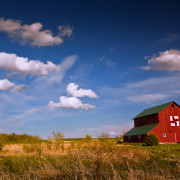Autumn Solitude
The tree which moves some to tears of joy is in the eyes of others
only a green thing that stands in the way.
Some see Nature all ridicule and deformity,
and some scarce see Nature at all.
But to the eyes of the man of imagination,
Nature is Imagination itself.
– William Blake, 1799, The Letter
……………………………………………………………………………..
This photo is an example of HDR imagery.
What is HDR photography? Let’s explore without going into too much scientific detail…
HDR stands for High Dynamic Range – so, a wide range between the darkest darks and lightest lights. Today, most HDR images are created with multiple exposures from a digital camera. In a three-exposure HDR image, such as the tree above, one would take three photos of a subject. One photo would be under exposed, one over exposed and one correctly exposed. This technique is called bracketing and digital SLR cameras have bracketing options built into the camera’s operating software.
After the three exposures are captured, they are imported into processing software such as Photoshop or Photomatix. Such software will present tonemapping options to tweak the final outcome of the HDR image. The final outcome can range from unrealistic, almost illustrated looks to “richer” realistic-looking photos.
Photography is an art, but it has always heavily relied upon science – perhaps, in this juxtaposition lies a lot of its fascination.
Canon EOS 5D
Canon EF 17-40mm f/4L USM
3 Exp. Photomatix HDR










NICE hdr…well done.
Best,
Louis
awesome shot loren. I am pretty amazed at this particular one.